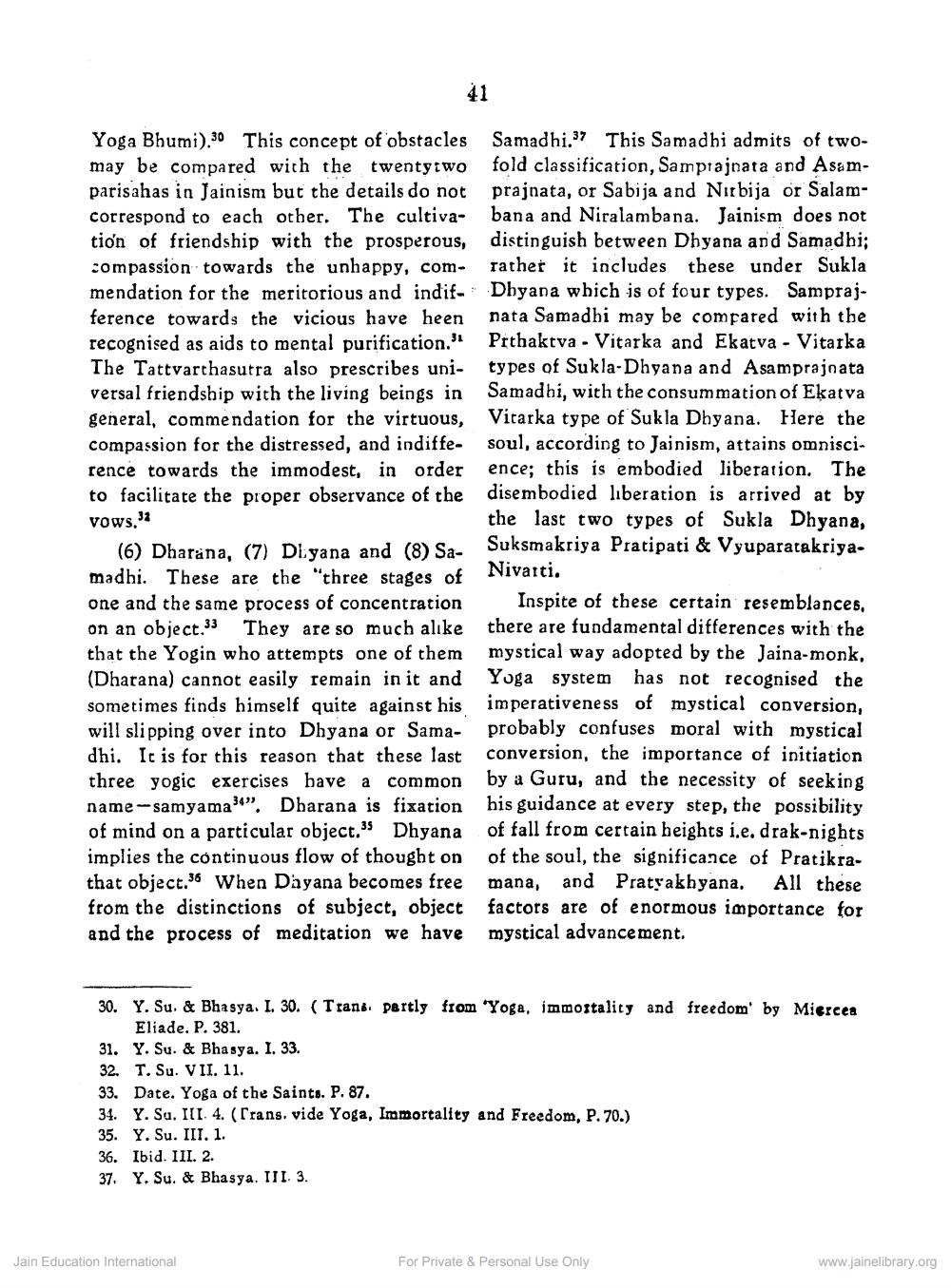________________
Yoga Bhumi).30 This concept of obstacles Samadhi." This Samadhi admits of twomay be compared with the twentytwo fold classification, Samprajnata and Asamparisahas in Jainism but the details do not prajnata, or Sabija and Nir bija or Salamcorrespond to each other. The cultiva- bana and Niralambana. Jainism does not tion of friendship with the prosperous, distinguish between Dhyana and Samadhi; compassion towards the unhappy, com- rather it includes these under Sukla mendation for the meritorious and indif- - Dhyana which is of four types. Samprajference towards the vicious have heen nata Samadhi may be compared with the recognised as aids to mental purification." Prthaktva - Vitarka and Ekatva - Vitarka The Tattvarthasutra also prescribes uni- types of Sukla-Dhyana and Asamprajnata versal friendship with the living beings in Samadhi, with the consummation of Ekatva general, commendation for the virtuous, Vitarka type of Sukla Dhyana. Here the compassion for the distressed, and indiffe. soul, according to Jainism, attains omnisci. rence towards the immodest, in order ence; this is embodied liberation. The to facilitate the proper observance of the disembodied liberation is arrived at by vows."
the last two types of Sukla Dhyana, (6) Dharana, (7) Dlyana and (8) Sa- Suksmakriya Pratipati & Vyuparatakriyamadhi. These are the three stages of Nivarti. one and the same process of concentration Inspite of these certain resemblances, on an object.33 They are so much alike there are fundamental differences with the that the Yogin who attempts one of them mystical way adopted by the Jaina-monk, (Dharana) cannot easily remain in it and Yoga system has not recognised the sometimes finds himself quite against his imperativeness of mystical conversion, will slipping over into Dhyana or Sama- probably confuses moral with mystical dhi. Ic is for this reason that these last conversion, the importance of initiation three yogic exercises bave a common by a Guru, and the necessity of seeking name-samyama?”. Dharana is fixation his guidance at every step, the possibility of mind on a particular object. Dhyana of fall from certain heights i.e. drak-nights implies the continuous flow of thought on of the soul, the significance of Pratikrathat object.96 When Dayana becomes free mana, and Pratyakhyana. All these from the distinctions of subject, object factors are of enormous importance for and the process of meditation we have mystical advancement.
30. Y. Su & Bhasya. I. 30. (Trans pertly from 'Yoga, immortality and freedom' by Miercea
Eliade. P. 381. 31. Y. Su. & Bhasya. I. 33. 32. T. Su. VII. 11. 33. Date. Yoga of the Saints. P. 87. 34. Y. Su. III. 4. (Crans. vide Yoga, Immortality and Freedom, P. 70.) 35. Y. Su. IIT. 1. 36. Ibid. III. 2. 37. Y. Su. & Bhasya. III 3.
Jain Education International
For Private & Personal Use Only
www.jainelibrary.org




